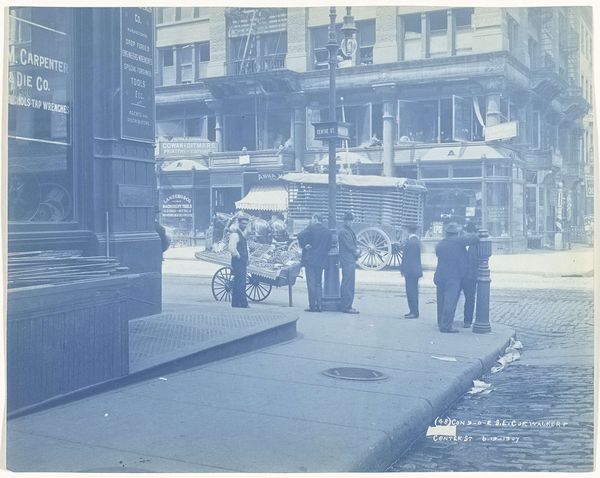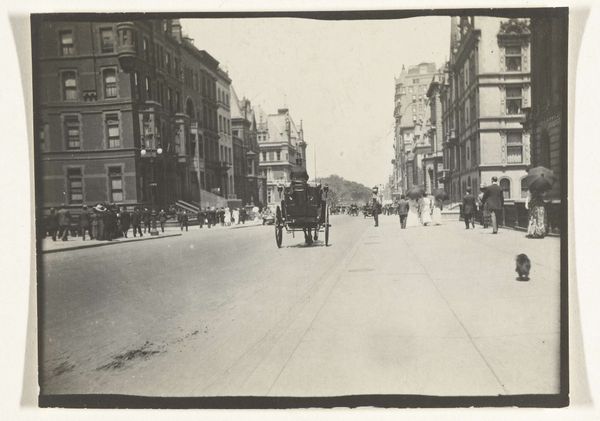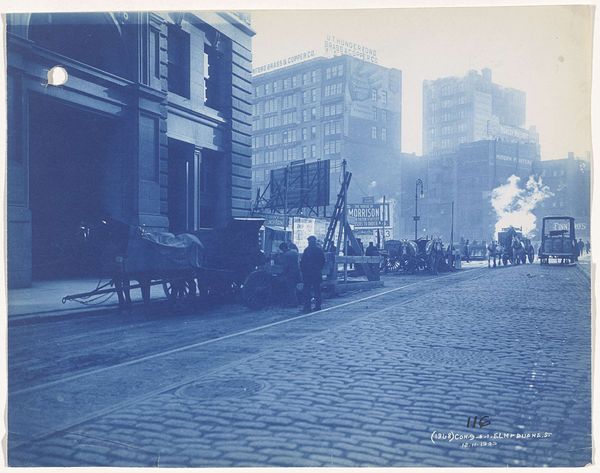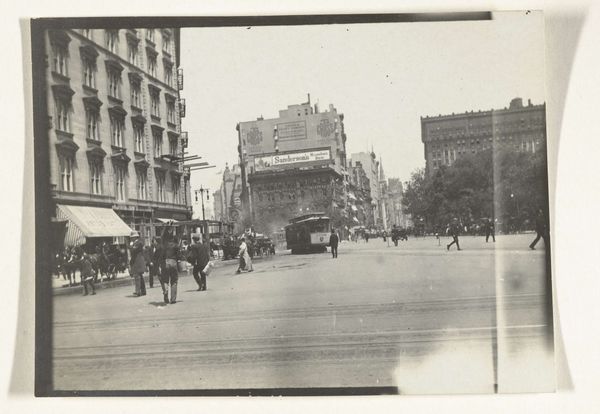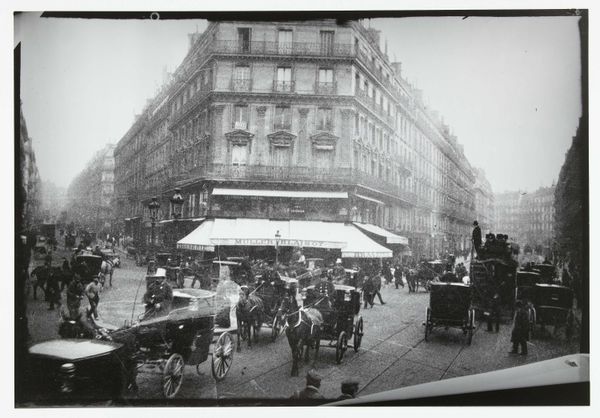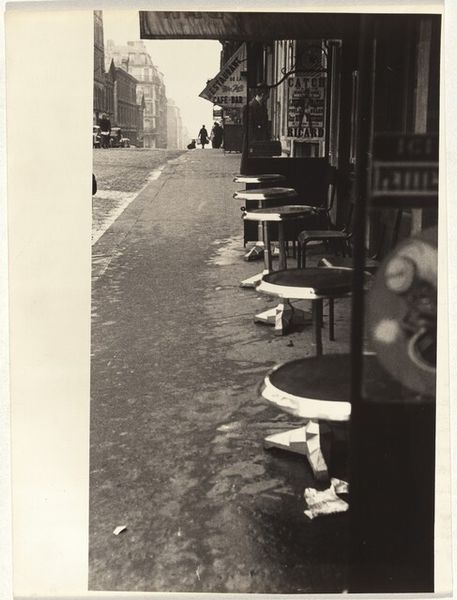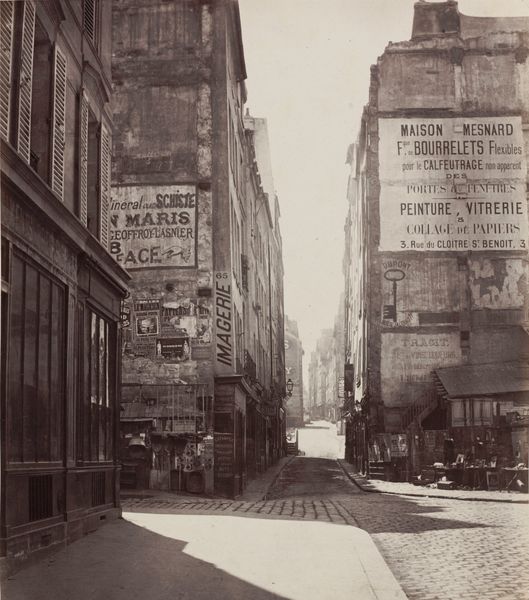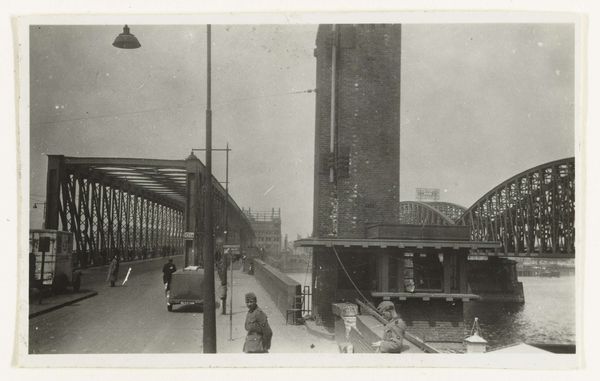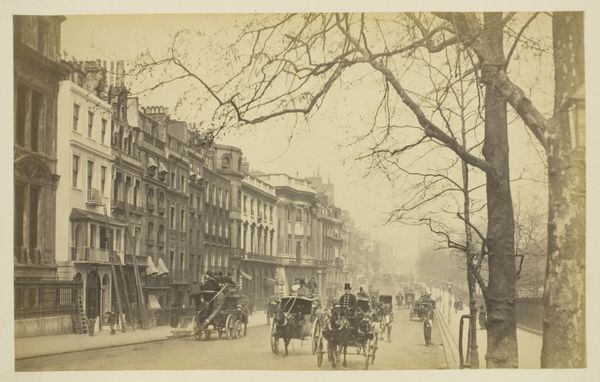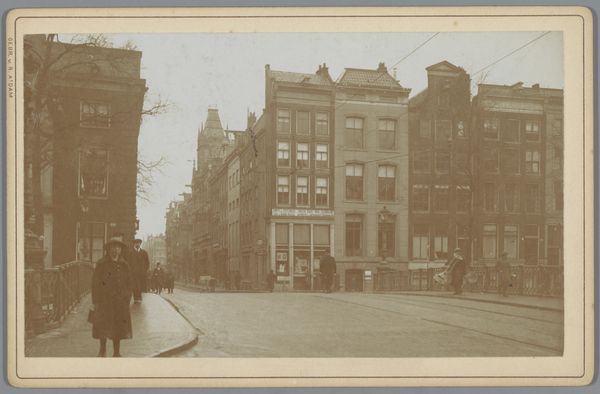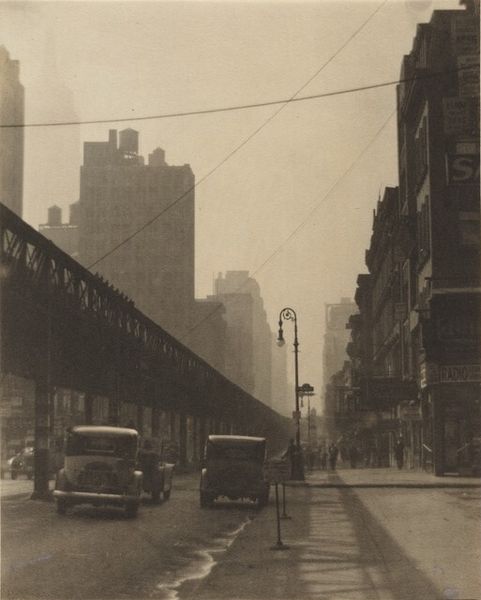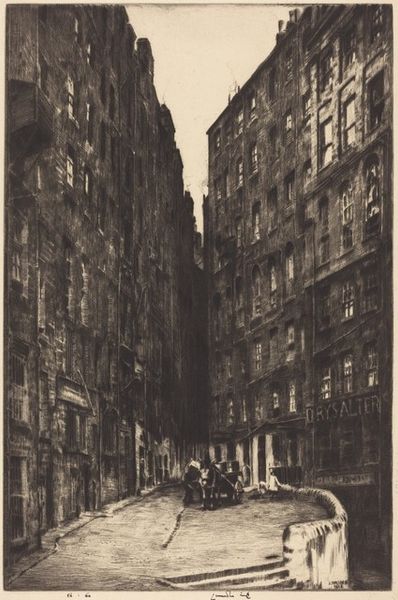
Dimensions: sheet: 20.2 x 25.2 cm (7 15/16 x 9 15/16 in.)
Copyright: National Gallery of Art: CC0 1.0
Editor: Here we have Robert Frank's "Vendor pushing cart in rain, Paris," a gelatin silver print from 1951. It's quite grainy and grey, creating a gloomy, somber atmosphere. What strikes me most is the vendor's isolation. What can you tell me about this piece? Curator: Focusing on the material reality, the photograph itself – the gelatin silver print – is key. Its accessibility allowed Frank to capture these fleeting moments of everyday labor. The graininess isn't a flaw; it's a conscious aesthetic choice, underscoring the gritty, working-class environment and pushing against the clean, idealized images of traditional photography. Editor: So, the roughness of the image mirrors the vendor's own rough existence? Curator: Precisely. Think about the process of street photography itself – the act of capturing a worker in transit, pushing his cart, is also the labor of the photographer in capturing a brief scene, but what is omitted? And how this production relates to larger systems of economy and the consumption of goods in post-war Paris. Are these systems hinted at or omitted? Editor: It sounds like you're suggesting we consider Frank's artistic labor alongside the vendor's physical labor. How does this understanding shift our viewing of the picture? Curator: Yes. It makes us question the act of representation itself. Is Frank exploiting the vendor's image for artistic gain? What are the ethics of photographing the working class in this way? Also, how might his position as a Swiss artist traveling throughout the United States at this time inform his view of his subject here, a vendor laboring on the streets of Paris? Editor: That's a perspective I hadn't considered. It really emphasizes the social and economic factors influencing the image, rather than just focusing on the aesthetic qualities. Curator: Exactly. It's about moving beyond the surface and understanding the means of production, the conditions of labor, and the social context within which the artwork and subject exists. We learn something from the gelatin itself. Editor: Thank you, I've really changed my perspective, seeing this work as being more about how things are made, rather than simply the image in itself. Curator: Wonderful, I think the image resonates a bit more once the socioeconomic dimensions become visible through the "grain".
Comments
No comments
Be the first to comment and join the conversation on the ultimate creative platform.
